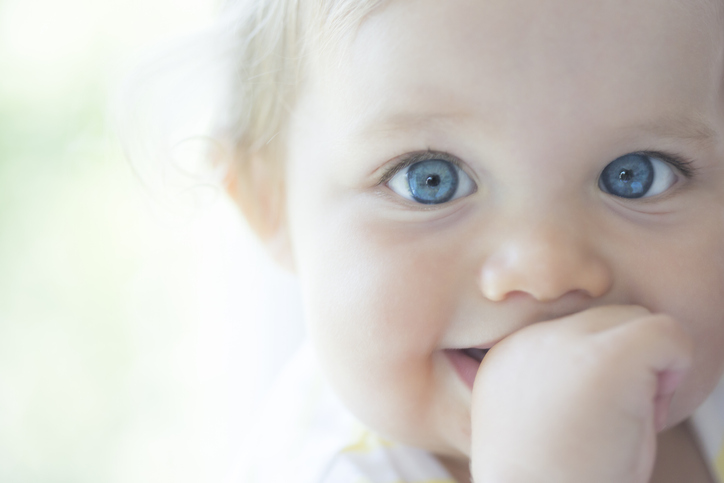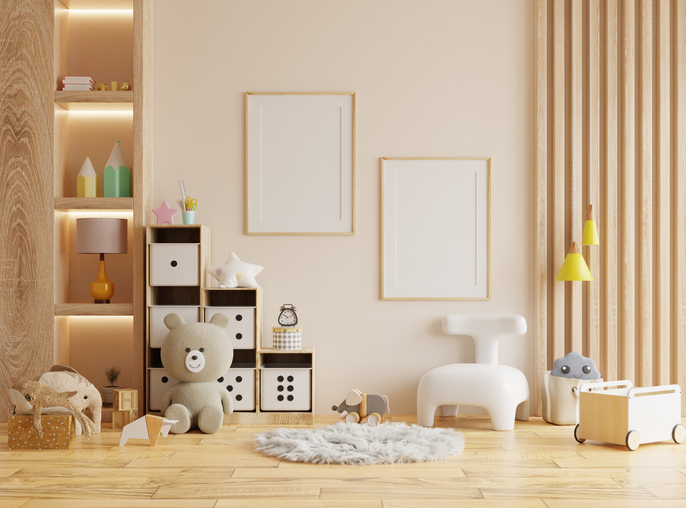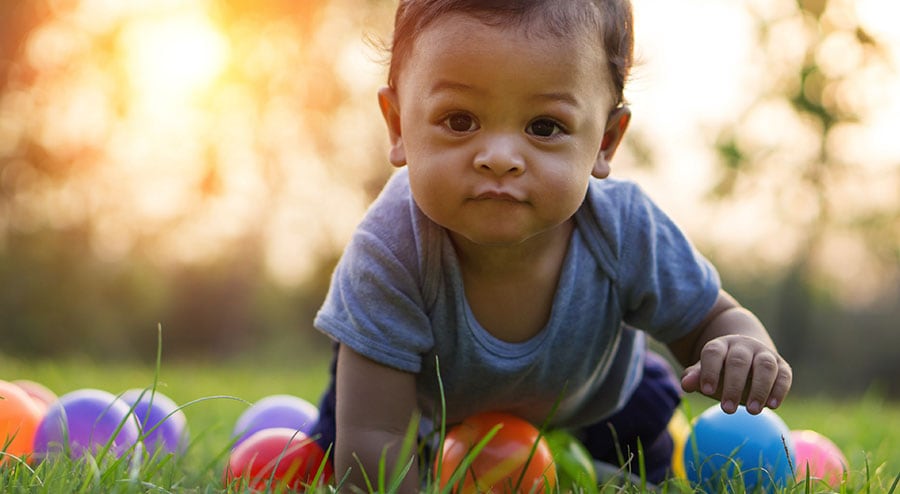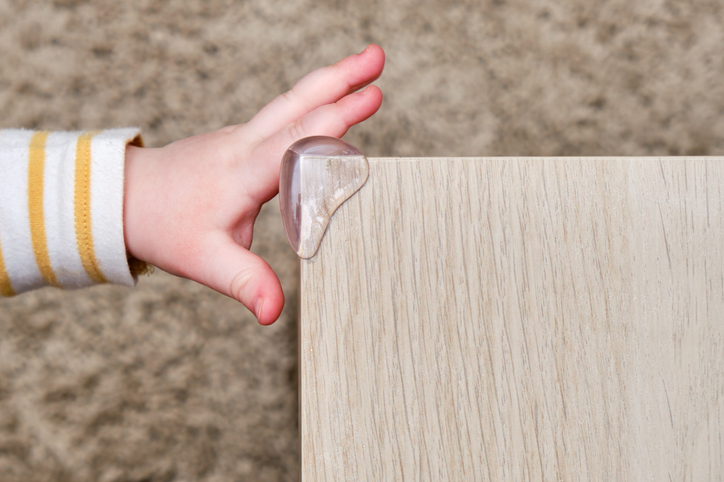Ensuring a safe and secure home environment for new parents is a priority as babies are naturally curious and tend to explore their surroundings without boundaries. However, their curiosity can lead to unforeseen dangers and proactive measures should be taken to baby-proof your home. Understanding the basics of home safety can help create an environment free from risks and reduce the chances of accidents.

From baby gates and cabinet locks to safe sleep environments and outdoor precautions, there is a wide range of safety considerations tailored specifically for new parents. There is excitement and challenges that come with welcoming a new baby and having the knowledge and tools to ensure a safe and happy home for your arrival.
Must-Have Safety Preparations
Before your baby arrives home, there are essential safety items you should install throughout your home. First and foremost, invest in electrical outlet covers and cord organizers to protect your baby from potential electrical hazards. These solutions are inexpensive, effective, and readily available at hardware stores or online retailers.
To prevent tip-overs, securely anchor all furniture to the wall, particularly bookshelves, dressers, and TV stands. Use furniture straps or anti-tip devices, which are easily adjustable and can be found at most baby stores or home improvement centers.
Strategically installing baby gates can also be done by placing them at the top and bottom of staircases, as well as in doorways that lead to hazardous areas such as the kitchen or bathrooms. Brands like Regalo, Summer Infant, and Evenflo offer a variety of durable and easy-to-install baby gates to fit different spaces and budgets.
Window blinds and curtains can be potential hazards due to their cords, which pose a strangulation risk to curious babies. Consider cordless window coverings or opt for safety tassels and cord wraps to keep cords out of reach. Brands like IKEA and Levolor offer cordless options, while CleverWraps and Safety 1st provide practical cord safety accessories.
Implementing these must-have safety preparations allows you to create a protective environment for your baby’s early years, allowing them to explore while minimizing potential risks.
Baby’s Nursery Safety
The nursery is where your baby will spend a significant amount of time and should optimize its safety. Organize and arrange the nursery with a focus on simplicity and functionality and keep all baby essentials within arm’s reach to avoid unnecessary bending and reaching, which can be challenging in the early postpartum days. Popular nursery organization products like Diaper Caddies from Munchkin or Storage Baskets from The Container Store can help keep baby items neatly organized and easily accessible.
Always adhere to the guidelines set by the American Academy of Pediatrics (AAP) when it comes to crib safety. Ensure that the crib meets safety standards, has slats spaced correctly, and features a firm, snug-fitting mattress. Avoid using soft objects, such as pillows and blankets, as these can increase the risk of suffocation. Instead, opt for sleep sacks or wearable blankets like HALO SleepSack, which provide warmth without the hazards of loose bedding.
Properly store and handle your baby’s medications by keeping all medications, including over-the-counter remedies, in a secure, locked cabinet or drawer, well out of your baby’s reach. Remember to check expiration dates regularly and dispose of any expired or unused medications safely. Products like the Safety 1st Medicine Cabinet Lock can add an extra layer of security to keep curious little ones away from potential dangers.
When it comes to choosing toys for your newborn, select toys that are age-appropriate, free from small parts that could pose choking hazards, and made from non-toxic materials. Popular and reputable toy brands like Fisher-Price, Manhattan Toy Company, and Lamaze offer a wide range of safe and stimulating toys designed specifically for newborns and young infants.
By following these nursery safety guidelines, you can create a safe space where your baby can rest, play, and explore. A well-organized and baby-proofed nursery provides comfort, convenience and security.
Creating Safe Spaces
There are certain areas of a home that new parents should focus on when it comes to baby-proofing. Be sure to assess the risks found in your kitchen, bathing areas, and play areas. Addressing fires risks is also and important consideration in creating a safe environment for your baby.
Baby-proofing the Kitchen
The kitchen can be a potential danger zone as it contains sharp objects, cleaning supplies, and hot appliances. To create a safe kitchen environment, install cabinet and drawer locks to prevent your baby from accessing dangerous items. Brands like Safety 1st and Dreambaby offer affordable and effective child-proofing solutions.
Additionally, secure all lower cabinets and drawers where heavy pots and pans are stored. Consider installing stove knob covers to prevent accidental gas or electric stove activation. For added safety, keep hot beverages and dishes away from the edges of counters and use back burners whenever possible. Ensuring a safe kitchen not only protects your baby but also brings peace of mind during meal preparation and cooking.
Ensuring a Safe Bathing Environment
To ensure a safe bathing environment and avoid potential accidents, invest in a non-slip bath mat for the bathtub to prevent slips and falls. A baby bath seat or bath support like the Angelcare Bath Support provides extra stability during bath time.
Always keep baby essentials, such as soap, shampoo, and towels, within arm’s reach, so you never need to leave your baby unattended. Avoid using bath oils or slippery substances that can make it challenging to hold your baby securely.
Safe Play Areas and Playpen Setup
To design a safe play area within your home, clear away any hazards like small objects, electrical cords, or low furniture with sharp edges. Make sure the area is well-lit and free from any potential tripping hazards.
Using a playpen can be an excellent way to create a secure play area for your baby. Look for playpens with adjustable height levels, cushioned flooring, and safety locks, such as the Graco Pack ‘n Play. Always follow the manufacturer’s guidelines for age and weight limits to ensure your baby’s safety during playtime.
Fire Safety – Baby-proofing Fireplaces and Heaters
Fireplaces and heaters can be dangerous for babies as they pose burn risks and potential access to hot surfaces. Install safety gates or fireplace screens to create a barrier between your baby and the fireplace. Brands like KidCo and Regalo offer sturdy and reliable safety gates designed for fireplace use.
For portable heaters, always keep them out of your baby’s reach and avoid placing any objects on or near the heater. When not in use, ensure heaters are turned off and unplugged to prevent accidental fires.
Implementing these safety measures in your home creates safe spaces for your baby to explore, play, and grow. Baby-proofing is an ongoing process, and regularly reassessing your home for potential hazards is a necessity.
Sleep and Rest Safety
Consistent temperature monitoring and proper cord management contribute to a safe and peaceful sleep space for your baby. Hence following sleep and rest safety guidelines allows you to create a secure sleep environment for your baby and ensure their comfort while reducing potential risks.
Safe Sleep Environment for Your Baby in the Same Room
Having your baby sleep in the same room with you for the first six months is recommended by the American Academy of Pediatrics (AAP) to reduce the risk of Sudden Infant Death Syndrome (SIDS). To ensure a safe sleep environment, place your baby’s crib or bassinet close to your bed but not in it. The AAP recommends using a firm mattress with a tightly fitted sheet and avoiding soft bedding, pillows, or blankets in the crib. Consider using a sleep sack or swaddle blanket, like those from Halo SleepSack or Aden + Anais, to keep your baby warm without the risk of suffocation.
Temperature Control in the Home for Baby’s Comfort and Safety
Maintain a comfortable and safe temperature in your home for your baby’s well-being. The ideal room temperature for your baby’s sleep is between 68-72°F (20-22°C). Use a reliable room thermometer to monitor the temperature and adjust heating or cooling accordingly. Brands like Vicks and Braun offer affordable and accurate digital room thermometers. Dress your baby appropriately for the room temperature, opting for light, breathable layers to avoid overheating.
Addressing Potential Dangers of Cords from Blinds and Curtains
Window blinds and curtains with cords can pose a significant strangulation risk to babies and young children. To address this, consider cordless window coverings, which eliminate the risk of entanglement. Brands like Levolor and Redi Shade offer cordless blinds and shades in various styles to suit your home’s decor. If cordless options are not feasible, use cord safety devices like cleats or cord wraps to keep the cords out of your baby’s reach.
Baby Carriers and Equipment Safety
Using baby carriers and equipment safely allows parents to enhance their bonding experience with their baby and promotes their physical and emotional development. Furthermore, baby monitors, when used responsibly, provide added peace of mind for parents, allowing them to monitor their baby’s sleep and activities while attending to other tasks around the house.
Using Baby Carriers and Slings Safely
Baby carriers and slings can be a convenient way to keep your little one close and provide them with a sense of comfort and security. However, be sure to use them safely to prevent any risks to your baby’s well-being. When selecting a baby carrier or sling, opt for reputable brands like Ergobaby, BabyBjorn, or Moby Wrap, which offer ergonomic designs and proper support for your baby’s developing spine.
Always follow the manufacturer’s guidelines and instructions when using a baby carrier or sling. Ensure that your baby is positioned in an upright and ergonomic position, with their face visible and airways unobstructed. Regularly check for any wear and tear on the carrier or sling, and discontinue use if you notice any signs of damage. Additionally, avoid covering your baby with a blanket or fabric while using a carrier, as it may hinder proper air circulation and lead to overheating.
Baby Monitor Usage and Safety Precautions
Baby monitors are tools that allow you to keep an eye on your baby, even when you are not in the same room. When setting up a baby monitor, place the camera at a safe distance from your baby’s crib, ensuring it provides a clear view without being too close to avoid any potential hazards. Brands like Infant Optics, VTech, and Arlo offer reliable and user-friendly baby monitors with video and audio capabilities.
Keep the baby monitor’s cords out of your baby’s reach and secure them to the wall or furniture using cord clips or cord covers. Make sure to use the baby monitor’s safety features, such as password protection and secure Wi-Fi settings, to prevent unauthorized access. While baby monitors can be valuable aids, they are not a substitute for parental supervision. Always prioritize direct observation and responsiveness to your baby’s needs.
Outdoor Safety Considerations
Parents should take outdoor safety considerations into account in order to create a secure and enjoyable environment for their baby when outdoors. Furthermore, parents can increase their child’s safety by ensuring that their pets and baby have a harmonious relationship.
Baby-Proofing the Outdoors
It’s essential to baby-proof your garden and garage areas to ensure a safe outdoor experience as your child begins to grow. Start by inspecting the garden for potential hazards such as sharp tools, chemicals, or poisonous plants. Keep these items securely stored and out of your baby’s reach.
When it comes to the garage, ensure all hazardous materials, like paints, solvents, and sharp tools, are stored in locked cabinets or placed on high shelves. Regularly check for any leaks or spills, and promptly clean up any oil or chemical spills to prevent slips and accidents. Additionally, keep the garage door remote out of your baby’s reach to avoid potential entrapment. Invest in door stoppers, such as the Wittle Door Knob Safety Covers, to prevent little fingers from getting caught in doors.
Pet Safety and Newborns
It is important to carefully consider how you will introduce your baby to potential pets and must ensure all interactions are supervised. Before bringing your baby home, start by familiarizing your pets with baby-related scents, such as lotions or powders, to help ease the transition. When introducing your baby to your pets, ensure they are calm and under control. Keep initial interactions brief and positive, offering treats or rewards for good behavior.
Always supervise any interactions between your pets and your baby, especially during the first few weeks. Never leave your baby alone with a pet, even if you trust them implicitly. Gradually increase the duration and closeness of interactions as your baby grows and becomes more mobile. Brands like PetSafe and Safety 1st offer pet gates and barriers that can help create separate spaces and add an extra layer of safety during this transition period.
Choking Hazards and Small Objects
In order to create a safe environment for your baby to explore and play without unnecessary risks, be aware and attentive of choking hazards, and small objects, and safely storing cleaning supplies and chemicals. Regularly reassessing your home for potential hazards and keeping safety as a top priority will help minimize accidents.
Preventing Choking Hazards and Keeping Small Objects Out of Reach
Babies and toddlers are naturally curious and tend to put everything in their mouths, making choking hazards a significant concern. Minimize the risk of choking by conducting a thorough sweep of your home to identify and remove small objects within your baby’s reach. This includes items like coins, button batteries, small toys, marbles, and any other objects that can fit through a toilet paper tube. Be diligent in picking up and securing small objects to prevent accidental ingestion.
Be sure to choose age-appropriate toys and always check the manufacturer’s age recommendations. Steer clear of toys with small parts that could pose choking hazards, especially for children under three years old. Brands like Melissa & Doug, Green Toys, and Fisher-Price offer a wide selection of safe and engaging toys for different age groups.
Storage and Handling of Cleaning Supplies and Chemicals
Cleaning supplies and chemicals pose potential risks to curious babies who may accidentally ingest them or come into contact with harmful substances. Always store cleaning supplies and chemicals in locked cabinets or high shelves that are out of your baby’s reach. Brands like Safety 1st offer child-proof cabinet locks that are easy to install and provide added security.
When using cleaning products, follow the instructions on the label and avoid mixing different chemicals, as some combinations can produce dangerous fumes. Consider using natural or baby-safe cleaning alternatives when possible to reduce the exposure to harsh chemicals in your home.
Final Thought
As new parents, creating a safe home environment for your baby is an important consideration. Baby-proofing electrical outlets, securing furniture, and using safe sleep surfaces are essential measures. Additionally, ensuring temperature control, managing cords from blinds and curtains, and properly storing medications and chemicals add to your baby’s safety. Introducing pets, outdoor safety, and diligent monitoring of small objects help create a secure space for your little one to explore and grow. By staying vigilant and implementing these safety measures, you can enjoy the journey of parenthood with peace of mind, knowing that your baby is well-protected in your home.




